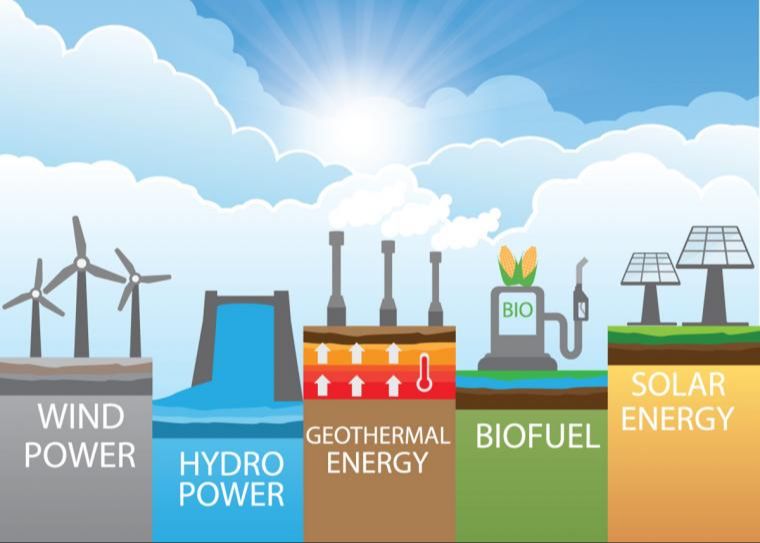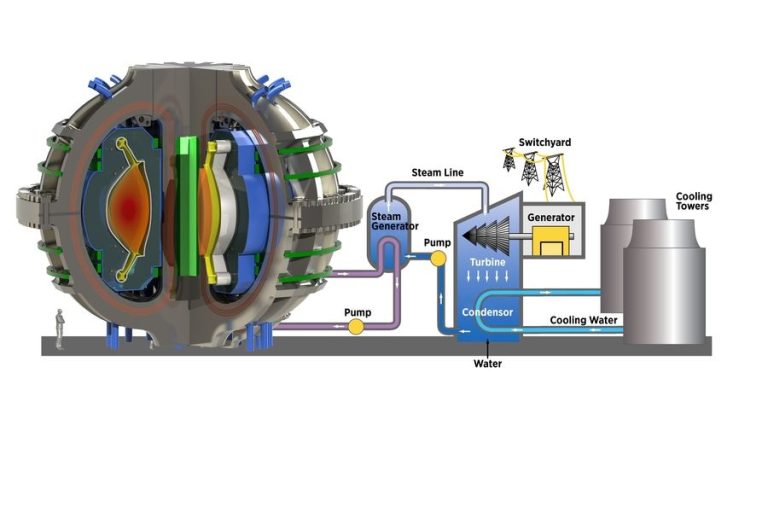How Many People Does Renewable Energy Employ?
Renewable energy is gaining momentum globally as countries and companies aim to reduce carbon emissions and mitigate climate change. Renewable energy utilizes naturally replenished energy sources such as sunlight, wind, water, plants, and geothermal heat to produce electricity, heat and fuel. In contrast to fossil fuels which draw on finite resources, renewable energy sources are constantly replenished and available around the world.
As the renewable energy sector grows, so does the number of jobs and economic opportunities it provides. Tracking renewable energy employment numbers over time gives insight into the growth and maturation of the industry. Understanding where jobs are being created regionally shows where investments are being made and policies are being implemented to transition to clean energy. Employment figures also indicate the quality and availability of renewable energy jobs, which has impacts on education, training and equality. In summary, renewable energy employment numbers provide an important barometer on the health and progress of the global energy transition.
Global Renewable Energy Employment
According to a report from the International Renewable Energy Agency (IRENA), renewable energy employed approximately 12.7 million people globally in 2021, an increase of 700,000 jobs from the previous year [1]. The solar energy industry accounts for over a third of renewable jobs at 4.3 million. In comparison, the oil and gas industry employs around 11 million people globally across extraction, processing, and distribution [2]. While the oil and gas industry currently provides slightly more direct jobs than renewables, IRENA projections indicate renewable energy could employ up to 43 million people by 2050 as countries continue to transition away from fossil fuels.
Solar Energy Employment
Solar energy has experienced explosive growth in recent years, becoming one of the largest renewable energy employers. Approximately 3.4 million people work in the solar photovoltaic industry globally as of 2021, according to the International Renewable Energy Agency. The solar PV sector employs around 2.4 million in China alone, followed by around 538,000 in India. The United States employs around 250,000 in solar PV.
Most solar jobs focus on the manufacturing, installation, wholesale trade, and project development aspects of the industry. Panel and cell manufacturing plants require factory workers and engineers, while solar farm construction employs electricians, roofers, and laborers to install panels. Once operational, solar farms employ technicians, electricians, and other overseers to maintain performance. Solar also creates many indirect jobs in permitting, legal, consulting, and financing roles.
As solar power expands its share of electricity generation, employment in the sector is projected to grow. Supportive policies like renewable portfolio standards and incentives will continue to drive solar job creation as well. Training programs at vocational schools and community colleges help scale up the solar workforce to meet labor needs.
Wind Energy Employment
Wind power is one of the fastest growing renewable energy sources globally. According to Statista, the wind energy sector in the European Union employed approximately 300,000 people in 2022, up from 265,000 in 2021 (Statista). In Mexico, wind energy jobs grew from 4,300 in 2018 to 5,900 in 2022 (Statista). The European Wind Energy Association projects wind jobs in Europe could reach 450,000 by 2020 if growth continues at the current rate (EWEA).
The growth in wind energy employment can be attributed to increasing wind power capacity around the world. Jobs are created in manufacturing, construction, operations, maintenance, and supporting services. With wind energy expected to expand its share of electricity generation in the coming decades, employment in the sector has significant potential for continued growth.
Other Renewable Energy Employment
In addition to solar and wind, there are other sources of renewable energy that also provide employment opportunities. One example is geothermal energy, which utilizes heat from the earth’s interior to generate electricity. According to the U.S. Bureau of Labor Statistics, geothermal energy directly employed an estimated 14,000 jobs in the U.S. as of 20121. Using a multiplier of 2.5 for indirect jobs, geothermal energy accounts for at least 35,000 jobs. Location is an important factor, as geothermal energy facilities are concentrated in states like California, Nevada, Utah, Hawaii, Idaho and Oregon1.
Other renewable sources like hydropower and biofuels also provide employment, though firm job figures are difficult to obtain. According to one estimate, the hydroelectric power generation sector employed over 200,000 jobs as of 2017 in the U.S.2. Biofuels like ethanol and biodiesel support hundreds of thousands of jobs in agricultural states3. Though smaller than solar or wind, these other renewables still provide a significant source of jobs and are projected to grow.
Regional Renewable Energy Employment
Renewable energy job growth varies significantly by region. In the United States, California leads with over 500,000 jobs in the renewable energy sector as of 2021, followed by Texas, New York, Florida, and Illinois as the top 5 states (E2). Many of the top metro areas for renewable energy jobs are also located in these states, including Los Angeles, New York City, San Francisco, Dallas, Houston, and Chicago (Business Insider).
Globally, China employs the most people in renewables, with over 4 million jobs as of 2019. The European Union and Brazil follow with over 1.5 million renewable energy jobs each. India and the United States round out the top 5 countries for renewable energy employment worldwide (DOE). Renewable energy job growth is projected to continue increasing across regions as more countries transition away from fossil fuels.
Projected Growth
Job growth in the renewable energy sector is expected to continue rising significantly in the coming years. According to the International Renewable Energy Agency (IRENA), the number of people employed in renewables globally could reach 42 million by 2050, quadruple the 2018 level. This is based on projections that renewable energy capacity will need to expand rapidly to meet global climate goals. Jobs in solar PV are expected to more than double from 3.4 million in 2018 to over 8 million in 2050. Wind energy jobs could grow from 1.2 million to nearly 3 million in 2050. Overall, IRENA estimates that transitioning to a predominantly renewable energy system by 2050 could add over 15 million renewable energy jobs globally.
The U.S. Department of Energy projects strong growth as well, estimating solar and wind jobs will grow to over 1 million in the U.S. by 2050. The expansion of renewable energy is leading to major employment opportunities worldwide, especially in solar and wind.
Challenges
The renewable energy sector faces several key challenges related to building and maintaining its workforce. One major challenge is the skill gap between the rapid growth of the sector and the available trained talent pool. As demand increases for renewable energy, companies struggle to find workers with specialized skills in areas like solar panel installation, wind turbine maintenance, and more.
Another hurdle is transitioning traditional energy sector workers and providing retraining opportunities. As fossil fuel industries decline, many oil, gas, and coal workers will need to shift into renewable energy careers. This requires extensive retraining programs and apprenticeships to teach new technical skills. Governments, unions, and employers must collaborate to smooth this workforce transition.
Lastly, renewable energy companies face challenges attracting younger workers and countering misconceptions about green energy jobs. The workforce skews older, and more outreach is needed to inspire students and recent graduates to pursue careers in this growing field. Overcoming dated biases about unstable “green jobs” also remains an issue.
Government Policy Impact
Government policies and incentives have played a major role in driving growth in renewable energy jobs. According to the U.S. Department of Energy, federal tax credits such as the investment tax credit (ITC) and production tax credit (PTC) have spurred over $500 billion in private investment in renewable energy since 2005.1 The extension of the ITC in 2015 helped triple solar employment in the United States between 2013 to 2020.2
Many states have also implemented renewable portfolio standards that require utilities to source a specific percentage of their electricity from renewables. These standards have been linked to significant job growth. For example, North Carolina’s renewable energy standard helped drive a 90% increase in clean energy jobs from 2007 to 2014.3
However, policy uncertainty can negatively impact renewable energy employment. Allowing tax credits to expire or changing incentive programs can create market volatility and dampen job growth. Striking the right balance of stable, long-term policies will be key to realizing the full employment potential of renewable energy.
Conclusion
In conclusion, renewable energy has become a major source of employment around the world. Total jobs in the sector have reached over 11 million globally, with solar and wind energy being the largest employers. Employment is expected to continue growing as more countries transition to renewable energy to combat climate change and ensure energy security. Renewable energy jobs provide opportunities across multiple occupations and skill levels, supporting local communities and economies. Realizing the full potential of renewable energy to create jobs requires supportive policies and workforce training programs. With the right strategies, renewable energy can drive job creation while building a cleaner and more sustainable future.





